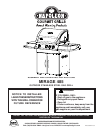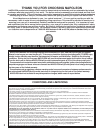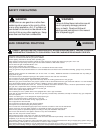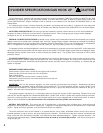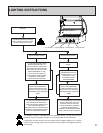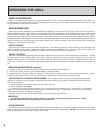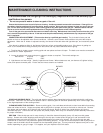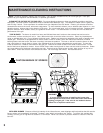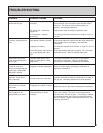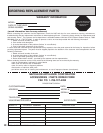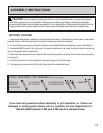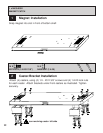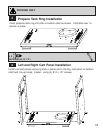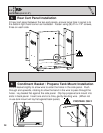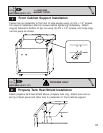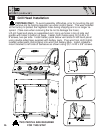Special offers from our partners!

Find Replacement BBQ Parts for 20,308 Models. Repair your BBQ today.
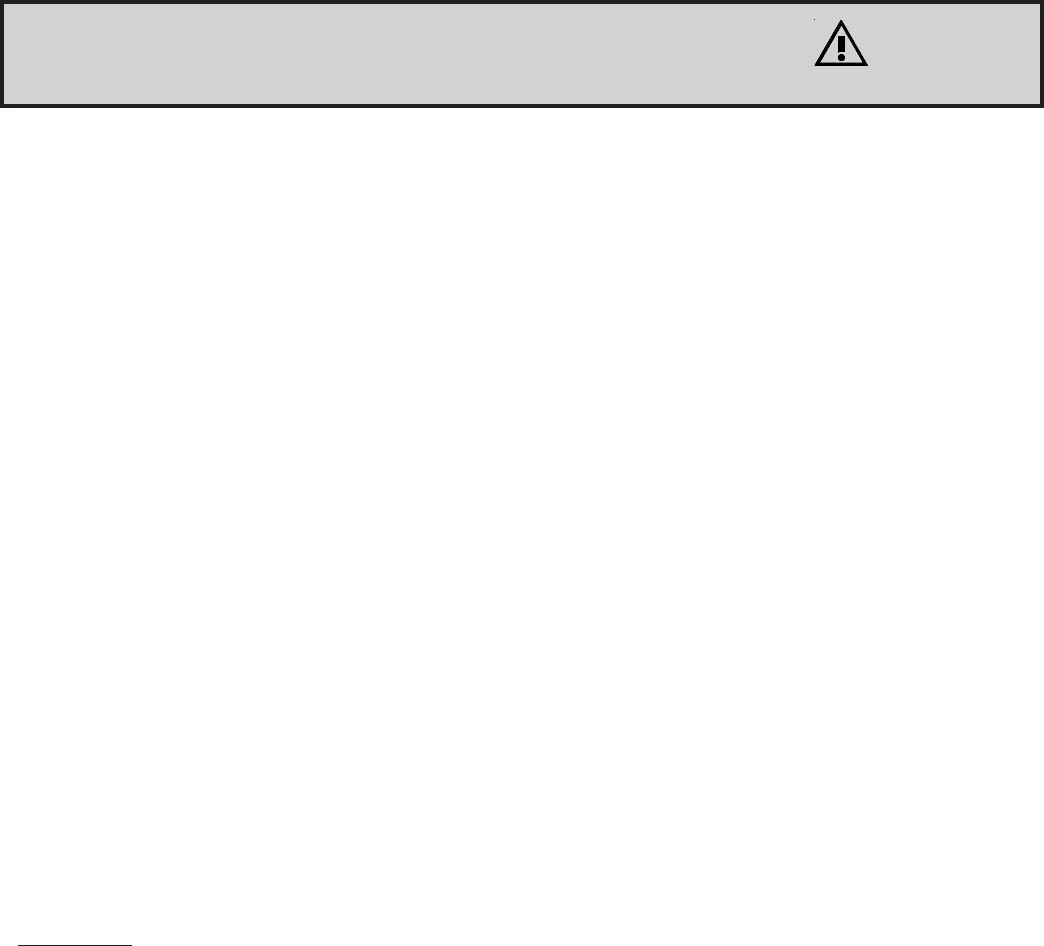
4
NATURAL GAS HOOK-UP: This natural gas grill is supplied with a 10ft supply hose (complete with a quick disconnect)
designed for natural gas and certified for outdoor use. The gas grill is designed to operate at an inlet pressure of 7 inches water
column. Piping and valves upstream of the quick disconnect are not supplied.
The quick disconnect must not be installed in an upward direction and a readily accessible manual shut-off valve must be
installed upstream of, and as close to, the quick disconnect as is feasible. The flared end of the hose must be connected to the
fitting on the end of the flex tube as illustrated in the
Natural Gas Hose Attachment
diagram. Tighten using two wrenches. (
Do
not use thread sealer/pipe dope.)
These connections must be made by a licensed gas installer. Leak test all joints prior to
using the gas grill.
PROPANE CYLINDER INSTALLATION:
Check that the cylinder valve is closed by turning the knob clockwise.
Check that the grills burner knobs are in the off position.
Open Cabinet doors.
Place the cylinder into the tank holder in bottom of shelf.
Position the cylinder so that the valve faces toward the front of the unit.
Attach regulator hose.
IMPORTANT: Use only the pressure regulator and hose assembly provided with this barbecue. Replacement pressure
regulators and hose assemblies must be specified by the manufacturer. Do not store propane cylinder or spare cylinder on the
shelf beneath the barbecue The regulator must be attached so that no part of the hose touches the underside of the grill or
drippan. A fire will result if these directions are ignored.
The regulator supplies a pressure of 11 inches water column to the gas grill and has a QCC1 type fitting. Cylinders to be used
with this unit must be supplied with a Sherwood #3349 QCC1 cylinder valve. A QCC1 cylinder has a positive seating connection,
which will not allow gas flow until a positive seal has been achieved. It is also equipped with an excess flow device. In order to
attain full flow to the barbecue, the valves must be in the off position when the cylinder valve is turned on.
PROPANE CYLINDER SPECIFICATIONS: A dented or rusty cylinder may be hazardous and should be checked by your propane
supplier. Never use a cylinder with a damaged valve. Use only a propane supply cylinder constructed and marked in accordance
with the specifications for LP-gas cylinders of the Canadian Transport Commission (CTC) or the US Department of Transportation
(DOT). This appliance has been designed for use with a 20lb. (9.1 kg) size propane cylinder only (not supplied).
The propane cylinder must be provided with a shut-off valve terminating in a propane cylinder valve type QCC1, and a safety relief
device having direct communication with the vapour space of the cylinder. The cylinder supply system must be arranged for vapour
withdrawal and the cylinder shall include a collar to protect the cylinder valve. The cylinder shall incorporate an OPD (overfill
protection device).
CYLINDER CONNECTION: Ensure that the gas regulator hose is kink free. Remove the cap or plug from the cylinder fuel valve.
Insert the black QCC1 regulator nipple onto the QCC1 fuel valve. Hand tighten clockwise. Do not use tools. Leak test all joints
prior to using the barbecue.
A leak test must be performed annually, and each time a cylinder is hooked up, or if a part of the gas
system is replaced.
CYLINDER SPECIFICATIONS/GAS HOOK UP
CAUTION
This gas barbecue is certified under Canadian and American national standards, CAN/CSA-1.6-2005 and ANSI Z21.58 -2005
respectively for outdoor gas grills and should be installed to conform with local codes. In absence of local codes, install to the
current CAN/CGA-B149.1 Propane Installation Code in Canada or to the National Fuel Gas Code, NFPA54/ANSI Z223.1 in the
United States.
If a rotisserie motor is used, it must be electrically grounded in accordance with local codes or, in absence of local codes, with
the current CSA C22.1 Canadian electrical code in Canada or the National Electrical Code, ANSI/NFPA 70 in the United States.
CALIFORNIA PROPOSITION 65: The burning of gas fuel creates by products, some of which are on the list as substances
known by the State of California to cause cancer or reproductive harm. When cooking with gas, always ensure adequate
ventilation to the unit, to minimize exposure to such substances.



